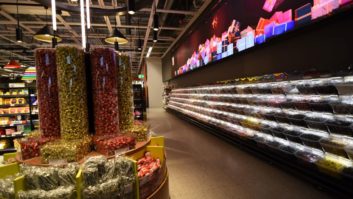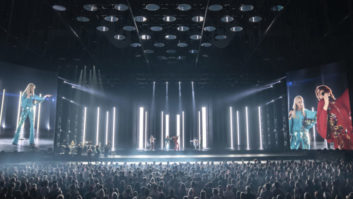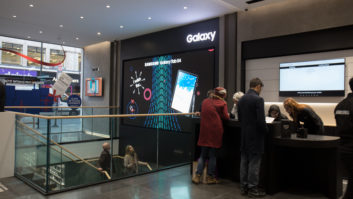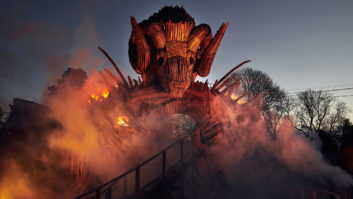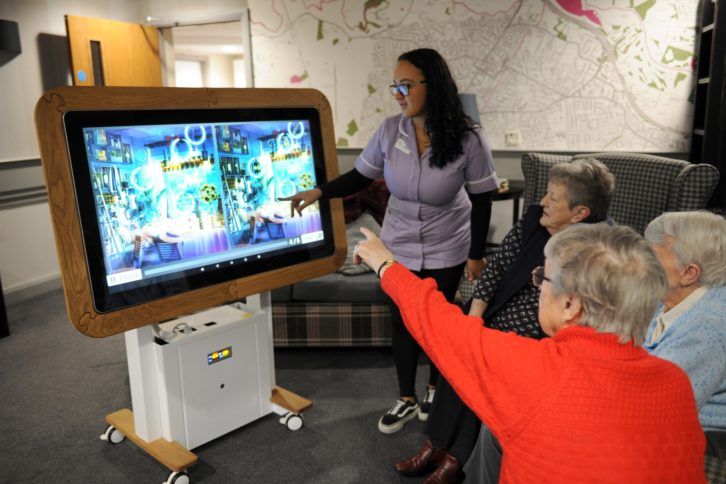
In the first part of this feature we outlined what a great experience should look like in AV. Here Ian McMurray looks at the importance of the user not being aware of the tech being utilised to deliver the seamless experience and also considers the affect active participation can have on engagement.
“A technology experience is typically defined as not great when users are aware of the technology that they are using,” agrees Peter Cliff, creative director at Holovis. “A great experience is when everything works seamlessly and the output of the technology is noticed above and beyond the physical system.”
“The challenge for the creative team together with the AV engineer is to design a solution in which the user is not aware of the sophisticated technology that is required to deliver a seamless experience,” echoes Ross Magri, managing director of Sarner. “This is easier said than done, but is possible with advance planning and close co-operation between the client, the design team and engineer.”
Command and control could not be a more different environment to those in which Alterface, Holovis and Sarner operate – but the requirement remains the same.
“With the use of AV in a control room or situational room for example, the focus is on effective decision-making,” points out Thomas Walter, who is section manager, strategic product marketing at NEC Display Solutions Europe. “AV technology is simply a tool to assist the operator. The optimum user experience is delivered by the equipment simply working smoothly and efficiently in the background.”
“Historically, in many installations, the AV was too much ‘in your face’”
Peter Pauwels, Barco
“Historically, in many installations, the AV was too much ‘in your face’,” notes Peter Pauwels, VP of sales, entertainment EMEA at Barco, “partially because technology did not allow better integration, and partly because people were unaware of the possibilities.”
He cites as an example that a projector no longer has to be at the centre of a room: the right lens and sufficient lens shift allows it to be hidden in the ceiling.
The end, not the means
It becomes clear that, whatever the environment or application, the first requirement for a great experience is: the technology should, to the maximum extent possible, be invisible. The focus should be on the end, not the means – and that applies equally to manufacturers.
“AV technology can make a real impact in customer-facing settings, particularly in sectors such as retail,” says Matt Saunders, product marketing manager – visual solutions at Sharp UK. “Manufacturers are also having to think more about the user experience: as consumers, we expect the technology we use to be accessible and intuitive, and we are increasingly demanding this in our professional lives as well.”
There’s little doubt, though, that for many, the spectacles to which Brad Grimes, AVIXA’s senior director of communications, refers – such as ‘Halo’, the Australian spectacular described above – are what AV experiences are all about. Delivering them has assumed increasing importance as millennials, with their known preference for experience over acquisition, have become possibly the most significant demographic – whether at work or at play.
“One thing we have noticed as the world has become an experience-focused economy is that the first question we ask clients in any of these sectors is now the same: ‘what do you want the user/guest experience to be?’” says Cliff. He might, of course, equally be asking a retailer what the consumer experience should be, or an educationalist what the pupil experience should be.
Remaining in the memory
A recurring theme in some applications – it is perhaps less true for, for example, collaborative communications or education – is the concept of engagement. The thinking is: something in which you have actively participated will remain longer in the memory than something you have merely witnessed – and the goal of an experience is surely that it should be memorable. Certainly, in retail, the goal of digital signage is to not only attract the attention of consumers: it’s to engage them. Historically, that has meant encouraging interaction – establishing a deeper relationship than simply looking at something.
In the market for ‘experiences for experiences’ sake’, for want of a better term – theme parks, visitor attractions, exhibitions and so on – engagement is key. That doesn’t, however, just have to mean touching a screen, as Matt Barton, CEO of 7thSense Design, points out.
“Interactivity can be difficult when dealing with larger audiences as each person will want to interact differently,” he says. “However, creating immersion using technologies such as high frame rate, high resolution displays and wide field of view screens can allow people to feel as though they are interacting, while at the same time allowing the storyteller to guide them through the experience.”
Alterface’s CEO and founder Benoit Cornet places similar value on image quality. His company recently launched what it calls ‘Erratic Ride’, which is said to be the world’s first non-linear (guest preferences and gaming levels determine the sequence, making it truly ‘visitor-centric’) mixed media ride and is installed in the Popcorn Revenge attraction at the Walibi amusement park in Belgium.
“The Alterface team worked with Barco for the projection technology,” he notes. “The combination of the low noise levels together with vivid colour performance and razor-sharp image quality significantly enhances the immersive experience of the dark ride.”
Case study: Helping keep minds sharp
Creating great user experiences isn’t just about satisfying millennials. Sharp supplied care homes provider New Care’s five Midlands and North West-based homes with its Meet UP interactive touchscreen tables. These provide elderly residents with access to thousands of downloadable games, puzzles, and quizzes, all with adjustable difficulty levels. Sensory applications – using light and sound – help provide dementia patients with an engaging familiarity.
www.7thsensedesign.com
www.alterface.com
www.avixa.org
www.nec-display-solutions.com
www.barco.com
www.holovis.com
www.sarner.com
www.sharp.co.uk


